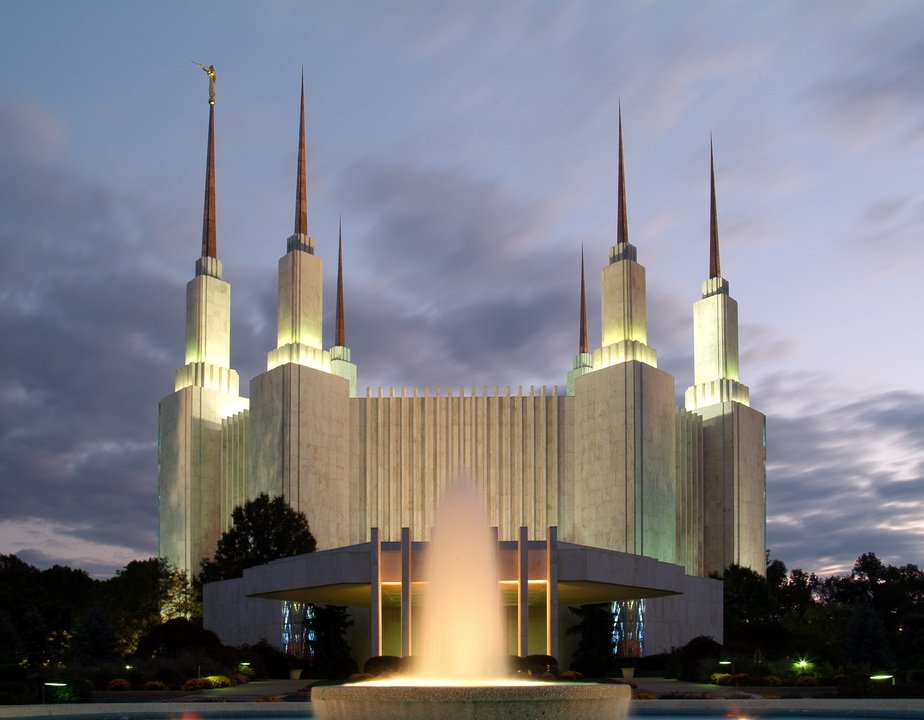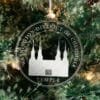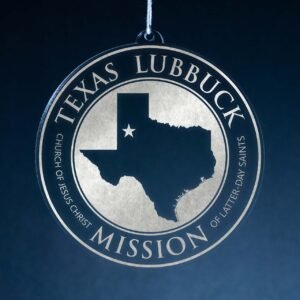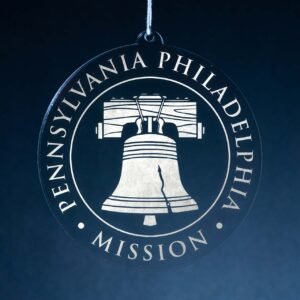Washington DC Temple Christmas Ornament
$17.99 Original price was: $17.99.$13.99Current price is: $13.99.
Let this ornament bring your family close together around the tree to ponder the miracle of the Washington DC Temple.
| Material | Transparent Acrylic |
| Construction | Laser Etching |
| Length | 4 Inches |
| Width | 3 7/8 Inches |
| Weight | 0.8 oz |
| Shipping | Usually ships within 1-2 days |
| Returns | Within 30 days of purchase |
Product Description
Made out of a lightweight and very durable transparent acrylic, this ornament will not weigh your tree down and can definitely withstand being dropped by the little ones should they get too curious around the tree. The acrylic is cut into a 4 inch circle and then laser etched with the name of the temple and a graphic depicting an artistic representation of the Washington DC Temple.
Get one for your loved ones to remind them that families can be together forever!
Temple Information

Address
Kensington, Maryland 20895-3199
Dedicated
Size
Temple Locale
Standing on sprawling grounds about 10 miles north of the United States Capitol, the gold-spired Washington D.C. Temple is a well-known landmark along the Capital Beltway in Kensington, Maryland. The beauty of this soaring edifice is enhanced by a reflection pond near the visitors' center and a spouting water feature at the temple entrance. Sharing the 52-acre wooded site are the Washington D.C. Stake Center and the beautiful Washington D.C. Temple Visitors' Center, which hosts numerous interactive exhibits, a breathtaking reproduction of the Christus statue, and regular lectures and concerts throughout the year. Admission is free. At Christmastime, the grounds are set aglow during the Festival of Lights, which offers nightly concerts, a live nativity scene, and international nativity sets.
Temple Facts
The Washington D.C. Temple was the first temple built in the Eastern United States (and in the state of Maryland).
The Washington D.C. Temple was the first temple to feature six spires since the construction of the Salt Lake Temple, which inspired the design.
Soaring to a height of 288 feet, the Washington D.C. Temple is the tallest temple in the Church.
The Washington D.C. Temple is one of only four temples with six instruction rooms and the only one outside of Utah. (The other three temples are the Ogden Utah Temple, the Provo Utah Temple, and the Jordan River Utah Temple.)
The Washington D.C. Temple had originally been named the Washington Temple until it was renamed in 1999 following the announcement of a uniform naming guideline.
The Washington D.C. Temple is one of only five temples featuring an angel Moroni statue holding the gold plates. (The other four temples are the Los Angeles California Temple, the Jordan River Utah Temple, the Seattle Washington Temple, and the Mexico City Mexico Temple.)
Avard T. Fairbanks was one of nine sculptors who presented models for the Washington D.C. Temple angel Moroni. The 18-foot tall statue was cast in bronze, then covered with gold leaf. Moroni holds the gold plates in his left hand and a trumpet in his right. Fifteen-foot replicas of the statue were used on the Jordan River Utah Temple, Seattle Washington Temple, and México City México Temple.
Under the general direction of Church Architect Emil B. Fetzer, four architects collaborated on the design for the Washington D.C. Temple: Fred L. Markham, Henry P. Fetzer, Harold K. Beecher, and Keith W. Wilcox. Of the many design concepts submitted to the First Presidency, Brother Wilcox's design was selected.
The exterior of the Washington D.C. Temple is faced in white Alabama marble, symbolizing purity and enlightenment, which is shaved to 5/8 of an inch in some areas to allow a soft glow of sunlight to pass into the interior during the day.
Beautiful stained glass runs the length of the end towers of the Washington D.C. Temple with rich, vibrant reds and oranges giving way to more translucent blues and violets and finally white. The windows represent the unbroken progress toward the divine available in the gospel and the purity that enters one's life as he rises above earthly cares and reaches heavenward.
Eight bronze medallions—symbolizing creation, mortality, and the degrees of glory—are featured on both the gates and the doors of the Washington D.C. Temple. Sculptor Franz Johansen, a member of the Church, depicted the Big Dipper and North Star, the earth, the planets, the moon, the stars, the sun, concentric circles representing eternity, and seven concentric pentagons representing the seven dispensations.
The main lobby of the Washington D.C. Temple originally featured a striking 30-foot-long mural depicting the Second Coming of Jesus Christ. An image of the temple itself was incorporated into the mural.
The seven floors of the Washington D.C. Temple represent the six days of creation and the day of rest.
Following the completion ceremonies for the Washington D.C. Temple, in which a time capsule was placed in the northeast corner of the building, President Spencer W. Kimball conducted the largest press conference in the Church's history.
The highly successful public open house of the Washington D.C. Temple was attended by 758,328 guests including special guest Betty Ford—wife of then-U.S. President Gerald Ford. These tours resulted in over 75,000 missionary referrals.
General authorities spoke at each of the ten dedicatory sessions for the Washington D.C. Temple. All of the Church's general authorities were in attendance except for two: Elder Alma Sonne, Assistant to the Council of the Twelve, and President Milton R. Hunter, First Council of Seventy.
For a time, the Washington D.C. Temple offered overnight endowment sessions from Friday through Saturday to accommodate the many members who came on the weekend.
Related Products
Related products
-
Sale!

Texas Lubbock Mission Christmas Ornament
$18.98Original price was: $18.98.$16.98Current price is: $16.98. Add to cart -
Sale!

Tennessee Knoxville Mission Christmas Ornament
$18.98Original price was: $18.98.$16.98Current price is: $16.98. Add to cart -
Sale!

Pennsylvania Philadelphia Mission Christmas Ornament
$18.98Original price was: $18.98.$16.98Current price is: $16.98. Add to cart -
Sale!

North Carolina Raleigh Mission Christmas Ornament
$18.98Original price was: $18.98.$16.98Current price is: $16.98. Add to cart











